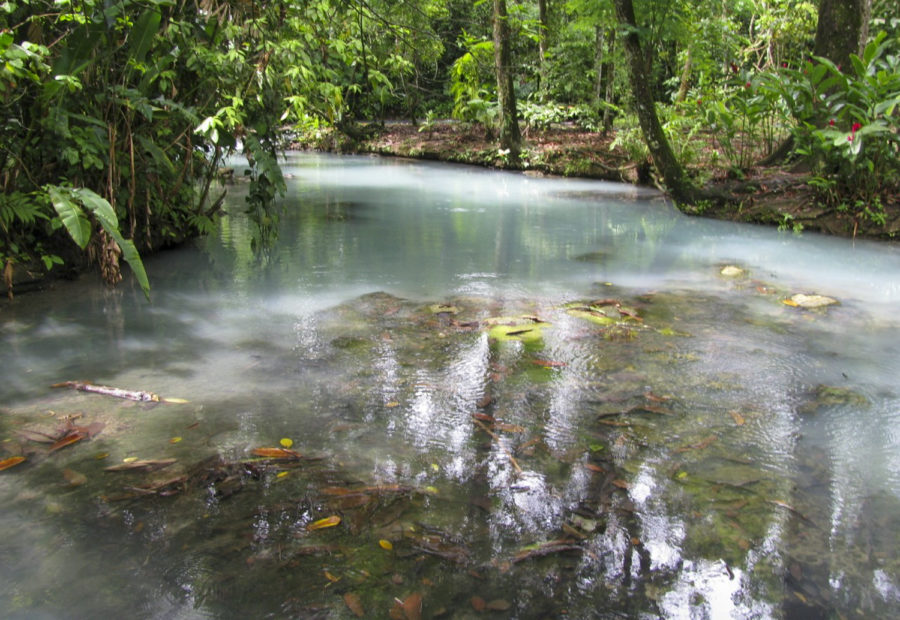Certain fish found to adapt to toxic water
If fish were not able to adapt to hydrogen sulfide, they would not be able to produce enough energy
Researchers studied multiple springs in Teapa, Mexico, with different levels of hydrogen sulfide and saw the stages of the fish adapting to the ecosystems.
March 18, 2021
Fish can adapt to living in water with deadly levels of hydrogen sulfide, researchers found.
These Poeciliid fish that the researchers studied are found in four different springs in southern Mexico. The researchers observed four different drainage sites in the Rio Grijalva Basin, said Kerry McGowan, fourth-year doctoral student focusing in computational biology and evolutionary genetics.
“Each of those drainage sites has the sulfidic springs, and then freshwater sites that we sample from,” she said.
In a normal fish without the adaptation, encountering high levels of hydrogen sulfide would stop their ability to complete cellular respiration because the fish cannot produce enough energy. Fish that do not have the adaptation will die in an ecosystem with high hydrogen sulfide levels, said Joanna Kelley, WSU evolutionary genomics researcher.
The adaptation occurred when certain fish obtained enzymes that speed up the hydrogen sulfide detoxification process, she said.
Before the fish acquire the adaptation, they are considered freshwater fish, but when they acquire the adaptation, they become sulfidic fish, McGowan said.
The fish’s appearance is affected by the adaptation, she said.
“They’re more narrow, or less bulky, than the freshwater fish, which might be indicative of poor body condition, but they’re healthy, to the point where they’re able to survive and reproduce in these springs quite effectively,” McGowan said.
By observing many different springs of water with slightly different levels of hydrogen sulfide, Kelley said she and her research team can see the distinct steps of the fish adapting to new ecosystems, and some even become new species, which is called speciation.
“We are capturing different points along the speciation continuum with some populations being much more recent and other ones already kind of undergone what we would say is kind of classic speciation,” Kelley said.
Releasing a fish without the adaptation into one of these springs would cause its body temperature to alter, removing it from optimal conditions, and is one reason the fish die, she said.
Hydrogen sulfide is also toxic to humans, giving off a rotten egg smell. The smell will go away as a person’s senses are overwhelmed, that could potentially lead to passing out or death, Kelley said.
The adaptation seen in fish is ultimately possible in humans too, although not probable. If humans were put in an environment of high hydrogen sulfide, they could hypothetically adapt in the same way the fish have adapted to the toxic water, she said.
“Humans have the enzymes necessary to detoxify hydrogen sulfide,” Kelley said. “Low levels of hydrogen sulfide are produced in our bodies as a byproduct of assisting metabolism, so we have the genes.”
However, it is not likely that the environment would ever change to a high hydrogen sulfide ecosystem where humans would have the chance to potentially adapt, she said.










